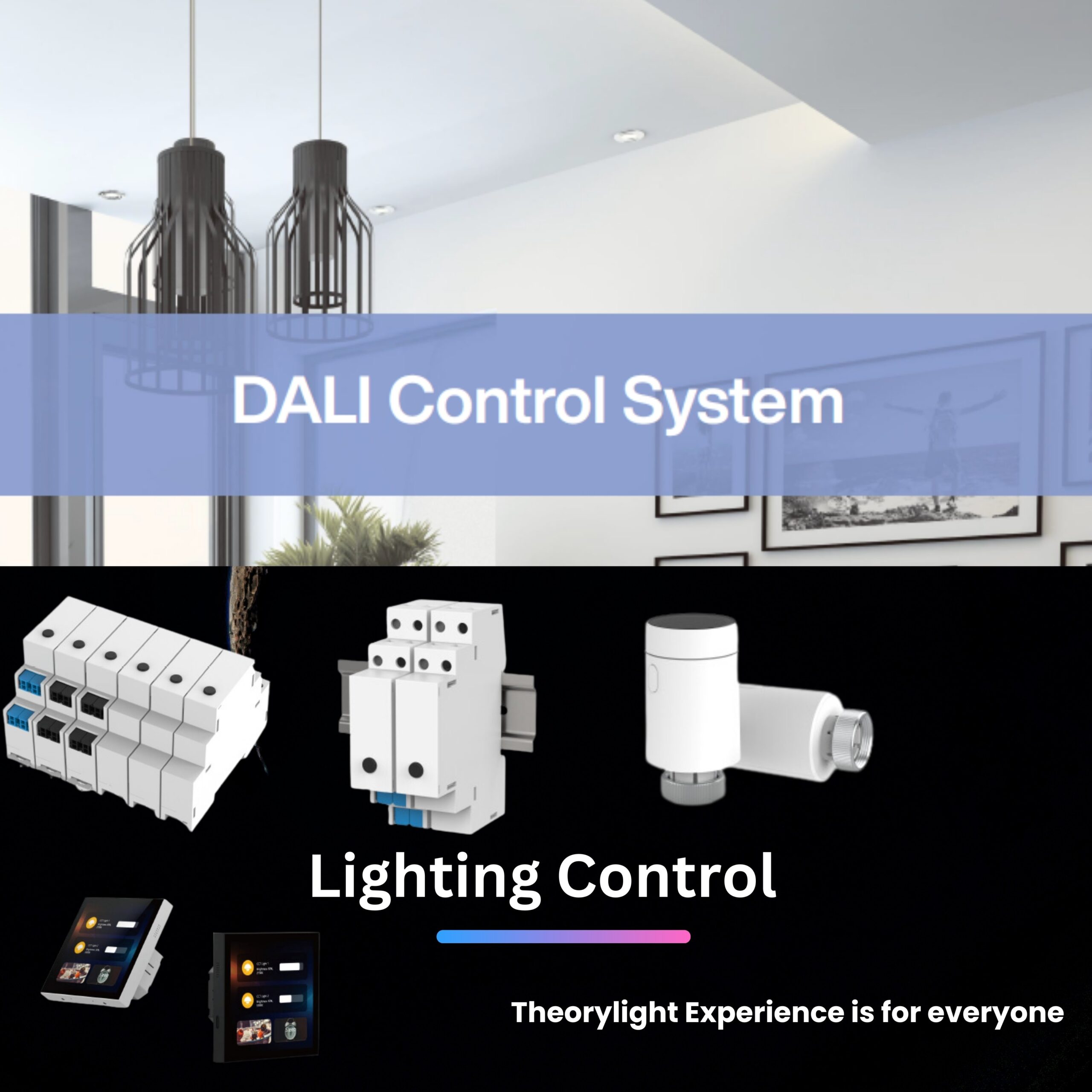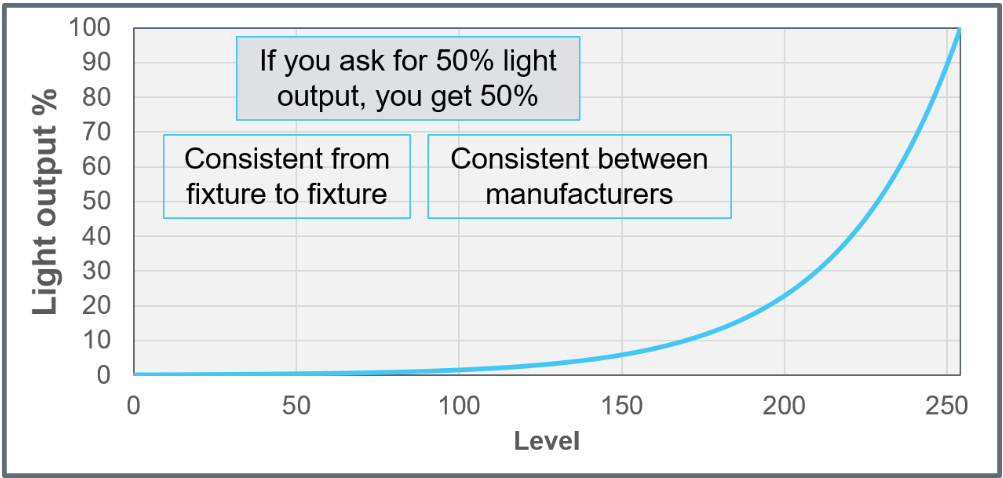
Key Features of the DALI Protocol
The Digital Addressable Lighting Interface (DALI) protocol is widely adopted for lighting control systems due to its flexibility, scalability, and robustness. The protocol supports the control, configuration, and querying of lighting devices over a 2-wire bus, allowing for easy communication between various devices such as LED drivers, sensors, and controllers. Below, we’ll explore its key features, applications, and specific benefits with examples, focusing on aspects like data transfer, bit/byte manipulation, speed, short/long addresses, and the different DALI types.
Data Transfer in DALI
In a DALI network, both power and data are carried over the same 2-wire bus. This eliminates the need for separate wiring for data transmission, reducing installation costs and complexity. The DALI system operates with a voltage of 16V when idle, with the voltage fluctuating during data transmission.
- Speed and Bandwidth: DALI systems operate at a relatively slow speed of 1200 bps (bits per second). This is sufficient for lighting control, where commands such as dimming, on/off, and color adjustment do not require high-speed communication. While 1200 bps is slow compared to modern network speeds (like Ethernet), it’s appropriate for lighting systems where the command size is typically small, and the real-time response is not critical in milliseconds.
- Packet Structure: Data is transferred in 16-bit packets (2 bytes), consisting of:
- 8 bits for the address
- 8 bits for the command (e.g., dimming or querying device status)
This small packet size ensures that data can be transmitted efficiently, even at the relatively slow speed of 1200 bps. For example, sending a command to turn a light off requires just a single 16-bit packet.
Bit vs. Byte Manipulation in DALI
The DALI protocol makes extensive use of bits and bytes for efficient data transfer. A bit is the smallest unit of data, representing a binary value of either 0 or 1, while a byte consists of 8 bits. In DALI, the control and query commands are represented as bytes to facilitate two-way communication.
Example:
A DALI command to dim a light could be structured as follows:
- Address: 8 bits (e.g., 10101010 for the address)
- Command: 8 bits (e.g., 00110010 for the command to dim the light)
This packet (2 bytes) is transmitted over the DALI bus to the appropriate device, and the luminaire responds by adjusting its brightness.
Short Address vs. Long Address
In DALI, devices can be addressed using either short addresses or long addresses:
- Short Address: A DALI system can control up to 64 devices per bus (subnet), each identified by a unique short address ranging from 0 to 63. Short addresses are used during normal operations to send commands to specific devices.
- Example: In an office with 64 lights, each light can have a short address between 0 and 63. The controller can send a command like “dim to 50%” to the light at address 10, and only that light will respond.
- Long Address: During commissioning, devices are identified by their globally unique long address. Long addresses are typically used only during setup or device replacement to ensure each device has a unique identifier across the entire system.
- Example: During the initial configuration, the system might use the long address (e.g., 0x123456) to identify each device before assigning short addresses.
Long addresses are particularly useful in large systems or installations where many devices need to be configured and identified uniquely.
DALI for Dimming
DALI is designed to provide precise control over dimming. One of the key features of DALI is its standardized dimming curve, which ensures smooth and consistent dimming across different devices and manufacturers. The dimming curve is designed to match human eye sensitivity, ensuring that changes in brightness appear smooth and linear.
- Example: In a retail store, DALI can control the lighting to ensure smooth dimming transitions, creating an appealing ambiance for customers.
Certified DALI-2 control gear follows this standardized dimming curve, ensuring compatibility across different products and ensuring a uniform experience in dimming operations.

DALI Command Types
DALI supports three main types of commands:
- Control Commands: These are used for basic lighting functions such as turning lights on or off, adjusting brightness, or recalling pre-set scenes.
- Example: A “fade to 50%” command adjusts the brightness of all lights in a room to a comfortable level for meetings.
- Configuration Commands: These commands are used to change the settings of a device, such as adjusting the fade time or changing the light level in a pre-set scene.
- Example: A configuration command might extend the fade time from 5 seconds to 15 seconds for a more gradual lighting transition.
- Query Commands: These allow the system to retrieve information from devices, such as the current brightness level or whether a lamp has failed.
- Example: A query command can check the operational status of a luminaire, ensuring that all lights are working correctly in a large facility.
Addressing and Grouping in DALI
DALI provides flexible addressing options, allowing control of individual devices, groups of devices, or even broadcasting commands to all devices. This makes it highly adaptable for both small and large-scale lighting systems.
- Individual Addressing: Each device in a DALI system has a unique short address, allowing for precise control of individual lights. This is ideal for applications like office lighting, where different zones might require different lighting levels.
- Example: An office may have different lighting zones for workspaces, meeting rooms, and corridors. Each zone can be individually controlled using short addresses.
- Group Addressing: DALI allows devices to be grouped together, so a single command can control multiple lights at once. Up to 16 groups can be created within a DALI system, simplifying control for larger areas.
- Example: In a conference room, all lights can be grouped together to respond to a single “scene” command that dims all lights when a presentation starts.
- Broadcast: DALI also supports broadcasting commands to all devices on the network, which is useful for global actions like turning off all lights in a building at the end of the day.
- Example: A security system might issue a broadcast command to turn off all lights when the building is secured at night.
DALI Scenes
Scenes allow for the fast and efficient recall of pre-defined light levels across a system. Each DALI device can store up to 16 scenes, which can be recalled with a single command. This makes it easy to implement lighting presets for different scenarios, such as meetings, presentations, or cleaning.
- Example: In a retail store, a “night scene” might dim the lights to a lower level for cleaning, while a “day scene” sets the lights to a brighter level for customer shopping hours.
Scenes are particularly useful in spaces where lighting needs change frequently or where lighting presets are required for specific activities.
DALI Type 6 vs. DALI Type 8
DALI supports two different device types: Type 6 (DT6) and Type 8 (DT8).
- DALI Type 6 (DT6): This device type is used for controlling a single lighting channel, such as brightness or color temperature. Each channel requires a separate address.
- Example: In a system with tunable white lights, one DT6 address controls brightness, while another DT6 address controls color temperature.
- DALI Type 8 (DT8): DT8 is used for controlling multiple lighting channels (e.g., brightness and color) using a single address. This simplifies installation and reduces the number of addresses required.
- Example: In a DT8 system, a single address can control both the brightness and color temperature of a tunable white light, making it easier to manage and reducing the complexity of the system.
Benefits of DALI Type 8 Over Type 6
DALI Type 8 provides several advantages over Type 6:
- Fewer Addresses: With DT8, a single address can control multiple channels, reducing the total number of addresses needed.
- Example: Instead of requiring two addresses (one for brightness and one for color), a single address can manage both, simplifying the system.
- Less Wiring: DT8 reduces the amount of wiring needed since it can control multiple channels over a single connection.
- Example: In a multi-channel RGB lighting system, DT8 allows for color control and dimming over a single bus line, minimizing wiring complexity.
- Application Example: DT8 is ideal for tunable white lighting systems, where both brightness and color temperature need to be adjusted simultaneously, such as in hospitals or schools where lighting conditions may vary throughout the day.
